Friday, 17/05/2024 | 09:18 GMT+7
Businesses have a tremendous potential for energy efficiency and conservation, particularly up to 30 percent of the energy used by local businesses could be saved if proper measures were taken. In Hanoi alone, the survey results in 10 big businesses active in major economic sectors such as textile-garment, leather and footwear, mechanical engineering, electrical and electronics etc. showed that these businesses could save 3.2 million kWh, or VND40 billion, each year if they took energy efficient measures. Businesses enjoy a number of incentives if they are willing to take energy efficient measures. However, reality shows that not many companies have taken such measures to save the production cost.
Gainings from energy conservation
The director of a project on promoting energy conservation
in small and medium size enterprises (PECSME), developed by the Ministry of
Science and Technology, the United Nations Development Program (UNDP) and the
Global Environment Fund (GEF), Nguyen Ba Vinh, said small and medium size
companies getting involved in the PECSME project will be financed with VND10-30
million for energy audits and technology transfer. When implementing the
project, they are in a position to secure preferential bank loans. As many as
535 businesses have taken part in the project thus far, of them 420 units
completed the project, saving around 160,000 tonnes of oil equivalents, abating
650,000 tonnes of carbon dioxide discharged into the environment.

Energy conservation can save SMEs a fortune
A private enterprise in Thach Loi, Cam Giang (Hai Duong
province), spent VND4.5 billion on procuring a cutting-edge non-interrupted
shaft-kiln system for brick production, of this VND1.1 billion was a
preferential bank loan. Besides, it bought some other equipment to lower energy
consumption and better the product quality. The baking time was then reduced by
35 percent. The enterprise can save around VND1 million each day and is
expected to recover the investment capital for cutting-edge energy efficient
equipment within three years.
In 2009, businesses received an enormous capital amount from
the national program on energy efficiency and conservation to promote energy
efficiency and conservation. The Ben Tre Sugar Joint Stock Company received
VND2 billion for implementing a project on overhauling energy efficient
equipment. The Vietnam Electronics and Informatics Corporation (VEIC) was
funded with VND5 billion out of VND32 billion it has injected into a project on
producing energy efficient LED lamps for industrial and household use.
 A marketing director at the Dien Quang Lamp Joint Stock
Company, Nguyen Bac Son, said in 2008 the company had invested in glass melting
furnaces with a daily capacity of 24 tonnes, the latest technology in Southeast
Asia. All the gas emissions were then procured and re-supplied to the glass
melting process. The heat recovery process helped save 30-35 percent of the
burning fuel, equal to 3,000 liters of FO oil each day, contributing to
lowering the production cost and raising the product competitiveness. Consequently,
Dien Quang was capable of raising its compact lamp production output by an
additional 12 million sets, bringing its compact lamp total production capacity
to around 50 million units per year.
A marketing director at the Dien Quang Lamp Joint Stock
Company, Nguyen Bac Son, said in 2008 the company had invested in glass melting
furnaces with a daily capacity of 24 tonnes, the latest technology in Southeast
Asia. All the gas emissions were then procured and re-supplied to the glass
melting process. The heat recovery process helped save 30-35 percent of the
burning fuel, equal to 3,000 liters of FO oil each day, contributing to
lowering the production cost and raising the product competitiveness. Consequently,
Dien Quang was capable of raising its compact lamp production output by an
additional 12 million sets, bringing its compact lamp total production capacity
to around 50 million units per year.
Energy efficient equipment helps the Thanh Hoa Brewery turn
out over 95 million liters of beer, save 1,039 tonnes of coal, and lower
methane and carbon dioxide emissions annually. Consequently, the company could
save around two million kWh and lower the power demand in the peak hours. Since
getting involved in the energy efficient solution, the company can save around
VND3 billion annually compared to the previous time.
The
Some brick production enterprises in Phuc Yen got fund from the program to replace traditional furnaces by non-interrupted shaft-kilns for brick production. Since then, they could save more than 850 tonnes of coal, 17 tonnes of firewood, reduce more than two million kilograms of carbon dioxide emissions and 25-30 percent of sulfur dioxide emissions each year.
The
Apparently, businesses benefit from a number of incentives while getting involved in energy efficient programs. However, as businesses and the society as a well know little about energy efficiency and conservation effects, not many companies have taken part in such programs.
The director of the Hanoi Department of Industry and Trade, Luu Tien Long, said most of businesses wished to invest in energy efficient solutions after they got to know the interests the solutions could bring. However, many of them were short of capital and they also feared of wading through cumbersome loaning procedures at banks.
Insufficient capital
Reality shows that the number of businesses strong enough to
invest in energy efficient technological innovations remains modest as many
companies are short of capital or unwilling to invest.

Both human and financial resources are needed to engage in energy efficient solutions
To engage in energy efficient solutions, businesses must pay
a round sum to equipment and technology preparations. Along with human resource
and idea investments, businesses are required to procure cutting-edge equipment
and machinery. The investment is rather big to many companies. When getting
involved in the energy efficiency and conservation program, businesses benefit
from preferential loans, however, it is difficult for them to get the loans due
to complex lending procedures.
In fact, businesses have to experience a bumpy road to get the preferential loans. That is partly due to incomplete legal system on energy efficiency and conservation.
Besides, apart from financial aids from international
organizations such as the European Bank for Reconstruction and Development,
Japan International Cooperation Agency and the Netherlands Development Bank,
etc. domestic organizations need to be active in finding diverse capital
sources. Specialists suggest businesses to turn to commercial banks or funds
having particular lending incentives for their capital needs.
Admittedly, a lot of businesses, particularly small units,
do not know how to establish the loaning projects properly. Small and medium
size companies are often low in the management capacity and do not have proper
accounts as the big ones while the lending procedures are overly complex.
Especially, to get a loan, businesses must have collateral
at a bank. A lot of businesses did not have collateral so that they could not
get the loans. To weather the problem, the PECSME project works with banks to
help businesses disentangle while avoiding risks for the banks and businesses
themselves when the projects get underway.
Even when getting the preferential loan to invest in modern
equipment and production lines, businesses have to mull over a lot of issues
such as the time for capital recovery and the interest payment. For instance,
the Hung Cach Pottery Enterprise in Giang Cao hamlet, Bat Trang village (Gia
Lam, Hanoi) spent VND1 billion on an energy efficient gas furnace to replace
former traditional coal-burning furnace (half of the amount was a preferential
bank loan). The enterprise owner said the 0.45 percent interest rate was
beneficial to the borrower. However, according to the lending procedure, the
enterprise had to pay back the loan after six months that was quite a short
time for it to generate profits. The enterprise was then driven into
difficulties.
In the coming period, along with training efforts must be made to increase propagation about energy efficiency and conservation among the community. Businesses need inclusive support including support in energy audit and management as well as in getting access to technology and preferential bank loans. They also need instructions on how to use the loans efficiently.
By Hung Linh
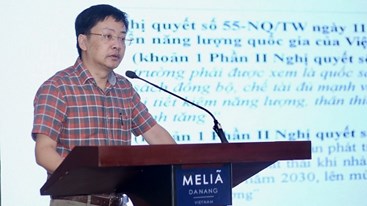
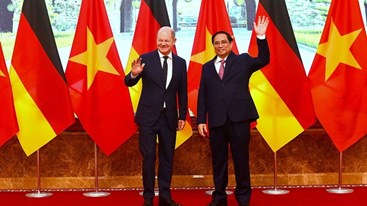
.png?w=367&h=206&mode=crop)
.jpg?w=367&h=206&mode=crop)
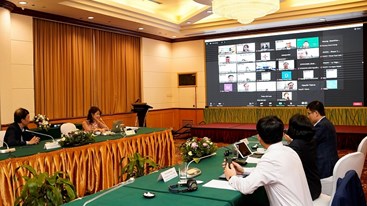
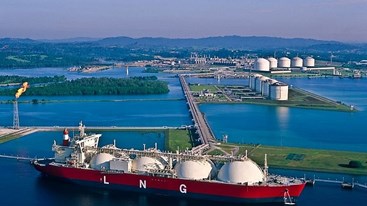
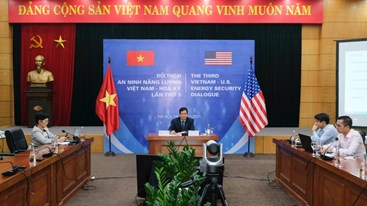
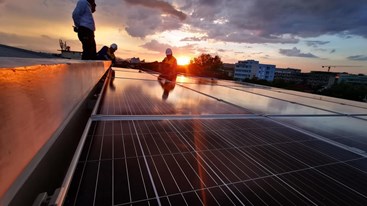
.jpg?w=367&h=206&mode=crop) Energy efficiency and conservation usage is an important aspect of the national energy development strategy
05/03/2024
Energy efficiency and conservation usage is an important aspect of the national energy development strategy
05/03/2024
 Challenges and Opportunities to promote energy efficiency market in Vietnam
Challenges and Opportunities to promote energy efficiency market in Vietnam
 The Ministry of Industry and Trade requests government agencies to coordinate in organizing Earth Hour 2024
The Ministry of Industry and Trade requests government agencies to coordinate in organizing Earth Hour 2024
 Consultation on Energy Efficiency Boiler Catalogue and Wood Drying Guideline
Consultation on Energy Efficiency Boiler Catalogue and Wood Drying Guideline
.png?w=367&h=206&mode=crop) Request for expression of interest - C2.1.13: Capacity Building on energy efficiency policies development
Request for expression of interest - C2.1.13: Capacity Building on energy efficiency policies development
 Son Ha Co., Ltd, applies energy efficiency and conservation measures
Son Ha Co., Ltd, applies energy efficiency and conservation measures
 Phuc Kien Co., Ltd., is effectively implementing energy-saving measures
Phuc Kien Co., Ltd., is effectively implementing energy-saving measures
 Request for expression of interest - C2.1.12: Independent monitoring of safeguards implementation
Request for expression of interest - C2.1.12: Independent monitoring of safeguards implementation